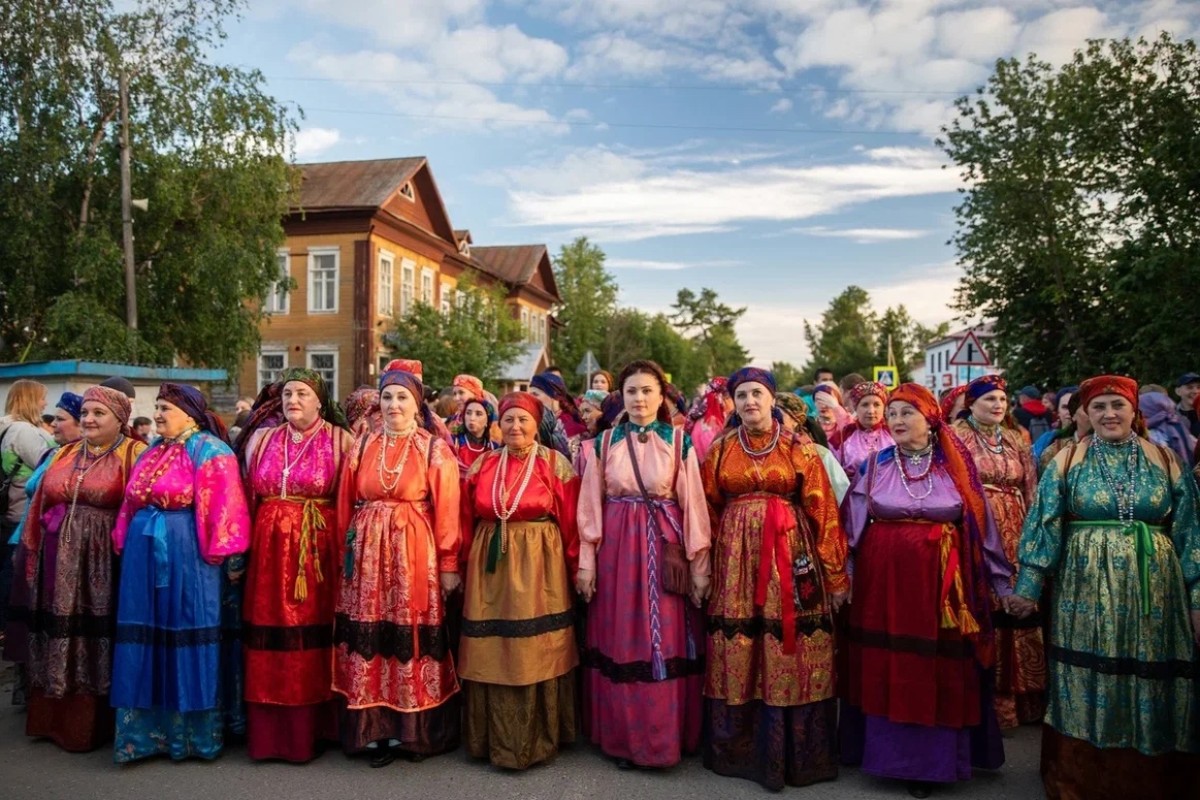
The main folk festival of the Izhma Komi.
Lud
What is Lud?
Lud is an essential part of the Komi Republic’s intangible heritage. In Izhma, the month of July, when the harvest begins, is the time of brides, and the Lud holiday is their fair. Having originated from the pre-Christian era, it is a kind of summer mass merrymaking that includes dances and games. In the old days, Lud, which translates as “meadow” from the Komi language, was held in every local village. Now that it was revived after being almost forgotten in the 20th century, it only takes place in the capital of the Izhemsky district, the village of Izhma. As the days of Lud, the first weekend of July was stated. This is very convenient for tourists who want to get acquainted with two gem events of the Komi Republic at one time: after visiting Izhma, they can go to the Ust-Tsilemsky district to see Gorka and compare an original Russian festival to a Komi one.
How the holiday is celebrated
The thing to which the greatest importance is attached during the festival is the Izhma women's dress. In the morning, simpler variations are worn, and in the evening, every girl puts on her richest outfit.
Dressing on Lud is always a ritual. It starts with putting on a cotton petticoat that lets the body breathe. The next piece of clothing to dress is a sos-shirt also known as yaponka. It is worn untucked. In the end, a sundress with an apron is put over a shirt. In earlier times, the width of its hem depended on the wealth of a girl’s family and might reach eight meters. It was considered a special chic when a sundress left a trail behind it making an illusion of floating. Now really wide hems are rare in Izhma, as it is hard to wear such a huge amount of fabric all day long. In total, five sundress cuts are known. In the old days, the so-called Kosoklinka was the most popular option; now it is almost entirely replaced by the Moscow type. The lower part of a sundress is decorated with a black ribbon that serves as an amulet. An apron is hemmed with cotton cloth that can be used as a handkerchief in hot weather or as a pinafore during a feast.
The parts of the dress have no buttons, only ties.
And of course, any outfit of an Izhma woman cannot be considered complete without three amulets: a crucifix, a belt, and a pin at the bottom of the hem.
As footwear, leather shoes known as churks are in use in Izhma. As a headdress, a kokoshnik with a volosnik, under which the hair is hidden.
At the brides’ fair, each family demonstrates not only the daughter's dress, but also what the girl knows. This is done in order to impress potential grooms, so in the autumn, before the snow falls, they remember the brightest moments of the last Lud and go to woo.
The main ritual of the holiday and its most beautiful part is the Red Gate procession. In the evening, Izhma women walk along the central street of the village singing and demonstrating their beauty and magnificent costumes.
One of the modern elements of Lud is the contest of the best riders. The Izhemsky district is known as the land of the Komi Republic’s most horse-loving people: some local families own dozens of stallions. During the contest of the best riders, Izhma men not only demonstrate their prowess and courage, but also literally prepare the ground for the further holiday activities.
Along with the above ones, there are a lot of other amusements Lud may include. It is the kissing round dance, and singing performance, and swatching game. But the most important thing about Lud is that it was the only time of the year when young Izhma people could walk in pairs without fear of judgment.